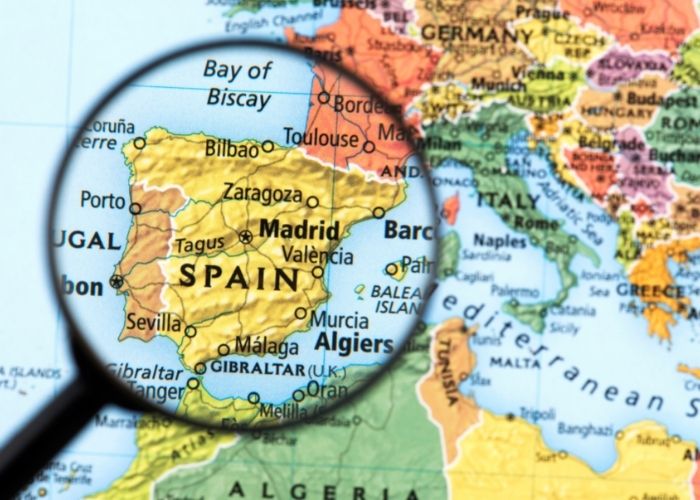MADRID – Those who have visited Madrid may know the point ‘Km 0’ on the Puerta del Sol square. They take a selfie and assume that they are in the centre of Spain. However, the marking indicates something different.
The Kilometre Zero Plate marks the origin of the six Spanish national highways. These highways start from Madrid towards the Basque Country, Catalonia, Valencia, Andalucia, and Extremadura in Galicia. However, not everyone agrees on the geographical centre of the country.
Two cities in Madrid dispute recognition as the geographical centre of Spain based on historical and mathematical arguments. But alternative theories place the heart of the country near two towns in Toledo.
Either way, it turns out to be a debate without a clear mathematical solution. Therefore, where really is the centre of Spain? Despite its compact shape, the irregularities of the Spanish peninsula – not including Portugal or Andorra – mean that even the experts disagree.
The reality, beyond geographic calculations, is that the two Madrid municipalities Getafe and Pinto have been fighting for this honour for decades. These two cities in the south of the Autonomous Community of Madrid put all kinds of arguments on the table to defend their position. Nevertheless, the regional government appears to have avoided deciding on more than one occasion. Furthermore, the granting of such recognition is not regulated by law.
Getafe in his ‘Angel’s Hill’
Getafe residents have no doubts that their municipality can take the credit. It was the Arabs who, on their arrival on the peninsula, took measurements and solved the riddle: the hill Cerro de Los Ángeles is, according to those calculations, the exact centre of the peninsula. Furthermore, it has been recognised as such in a more obvious way.
Alfonso VI built a hermitage on the top of the hill and in the 20th century Alfonso XIII dedicated a statue of the Sacred Heart to it. Its strategic value even led to this point becoming a site of contention between the two warring sides during the Civil War. The flee monument was subsequently inaugurated by Franco in 1965.
Pinto
In Pinto’s case, a round stone with a cross on it could be seen until the 1960s. This one was known as “La Exacta”. Today there is a monolith on that site between the streets of the hospital in Maestra María del Rosario. According to the legend of the ark, the Muslims buried an ark in this place with the instruments they had used to take their measurements.
In any case, other historical documents that show that the municipality was considered the centre of the peninsula in the past are some literary works from the 18th century. In a farce by Ramón de la Cruz it is said at one point: “… I paint, which shows off the central point of Spain…” In a work by Antonio Moya from 1756, it is explained that Pinto refers to the Latin Punctum (dot) because it is the central point of the peninsula.
Méntrida in Maqueda, the alternatives
Being an extremely complex issue from a geographical point of view, some have launched alternative theories in recent years. Therefore, it would not just be about the two cities in Madrid, but about two in the province of Toledo.
One is the point on the Spanish peninsula furthest from the sea. This honour belongs to the area around Maqueda. However, there is yet another version from 2007. This states that we find the geographic centre 4.5 kilometres from Méntrida (Toledo) and 30 kilometres from Madrid.
Interesting read: A brief history of Spain Part 1


